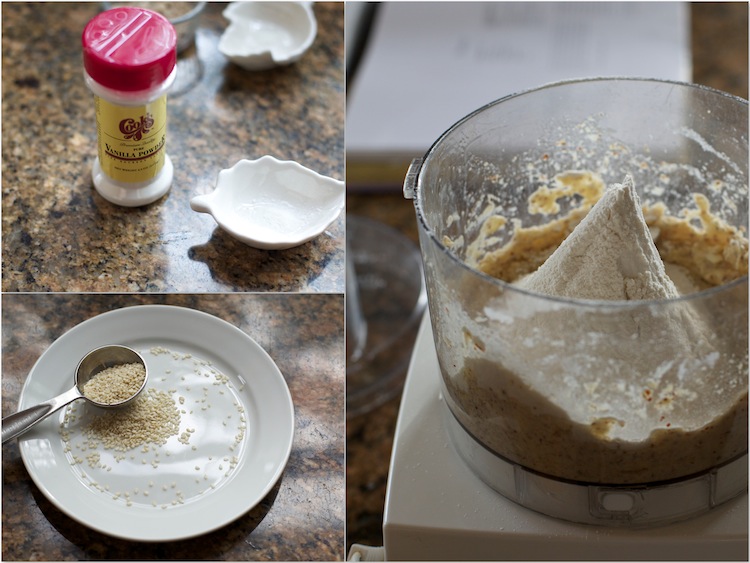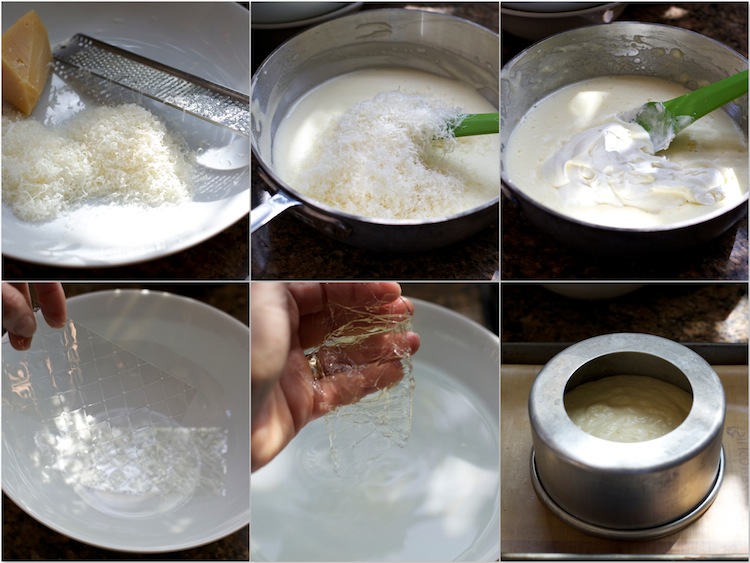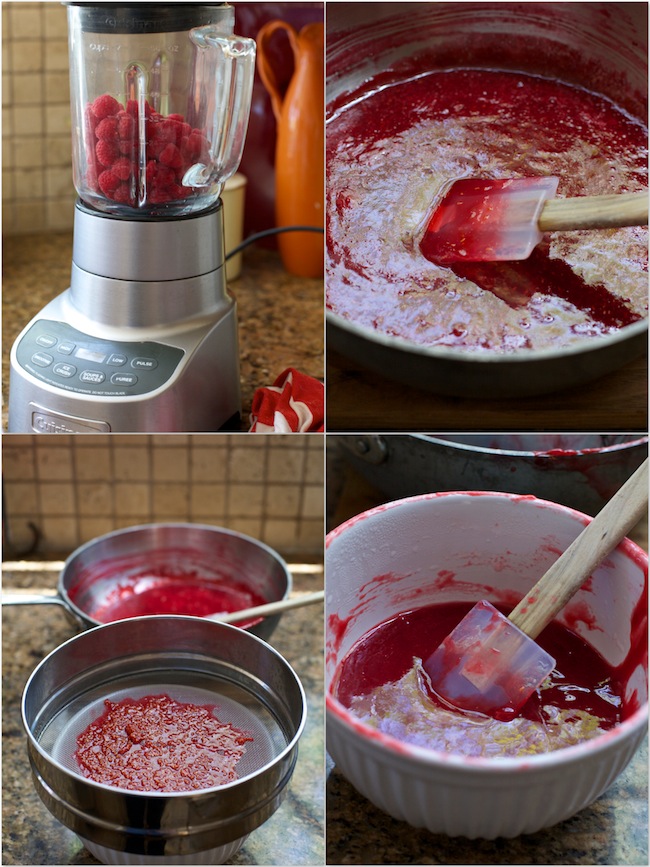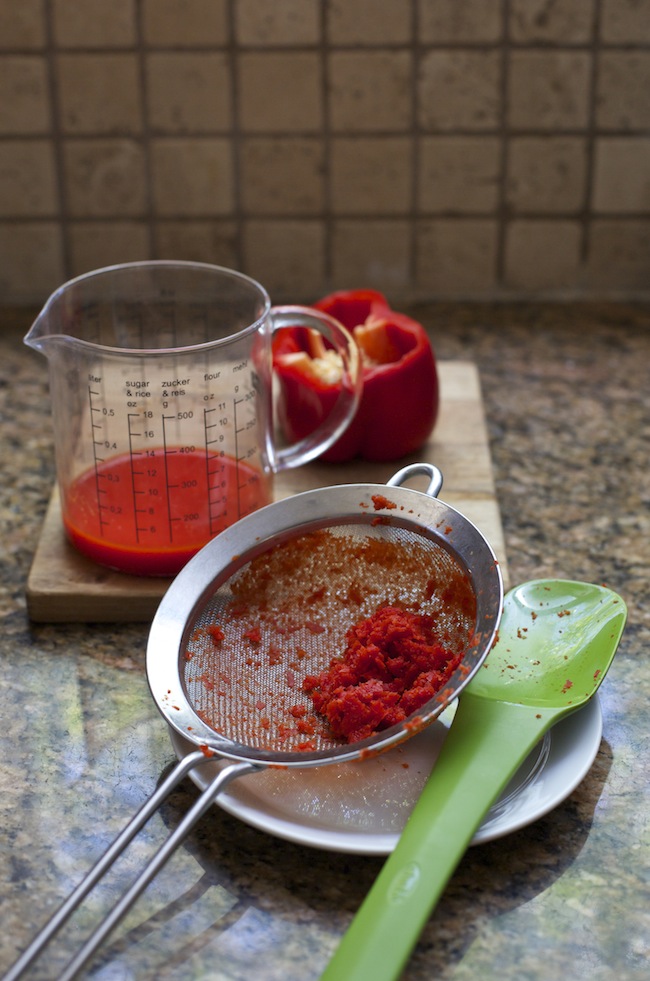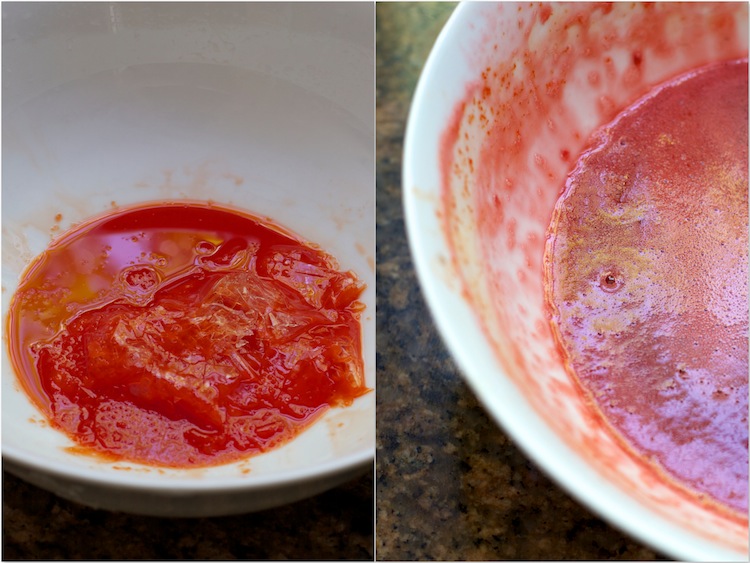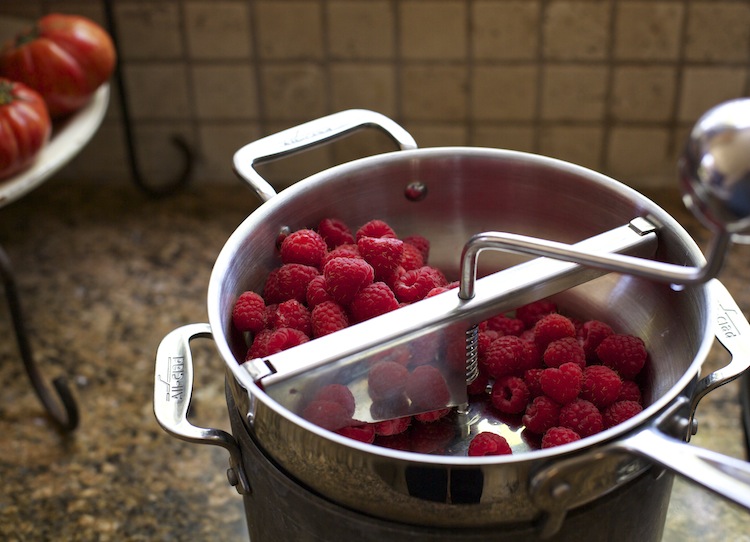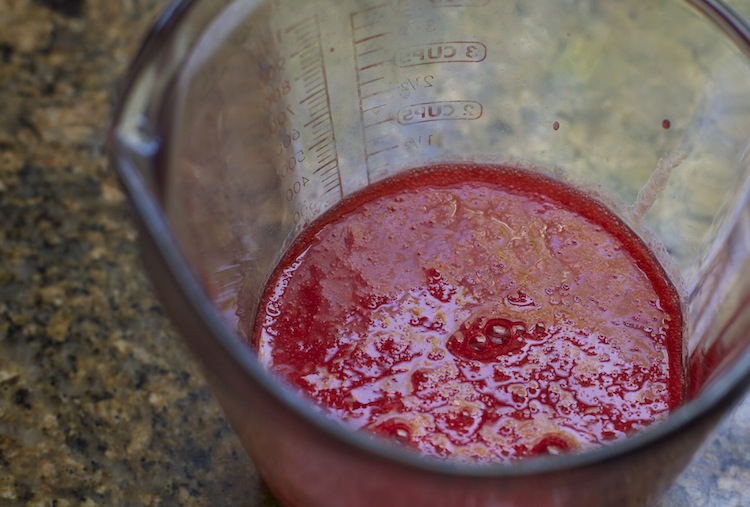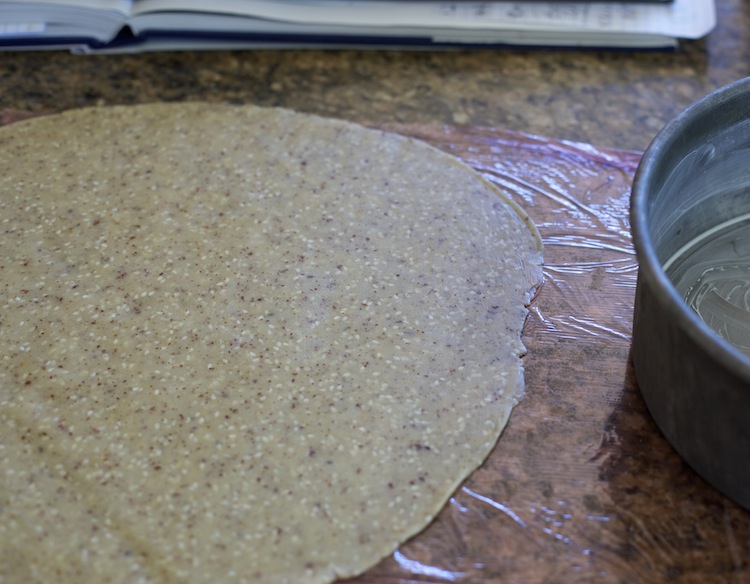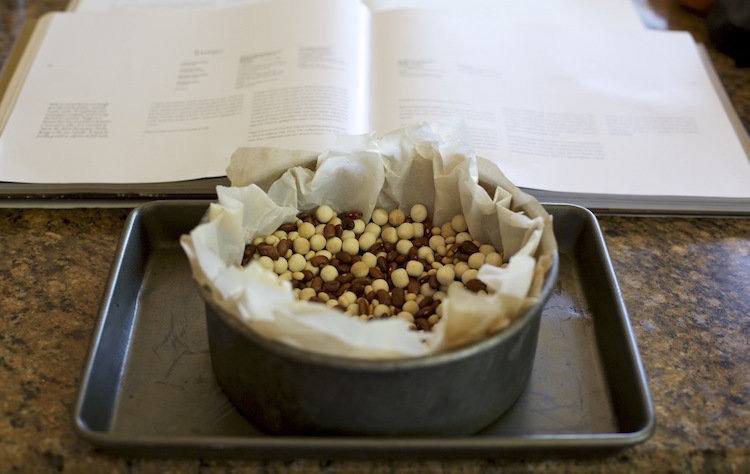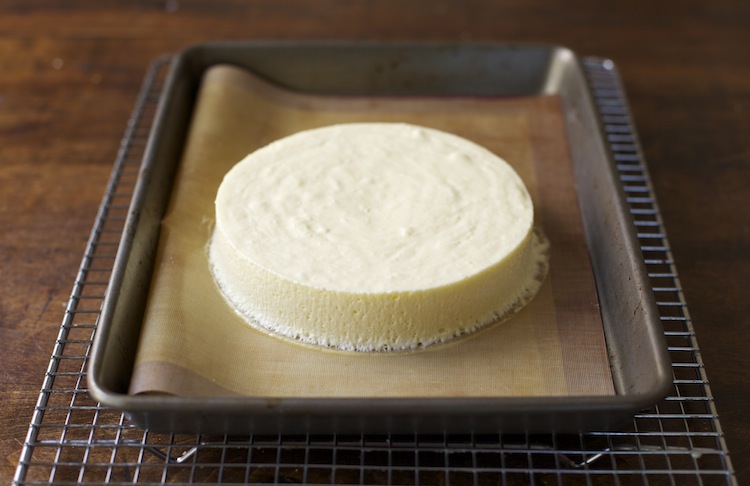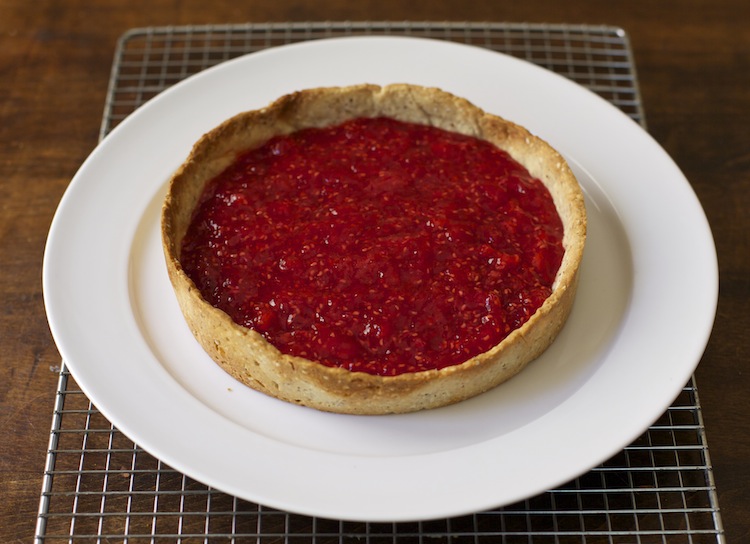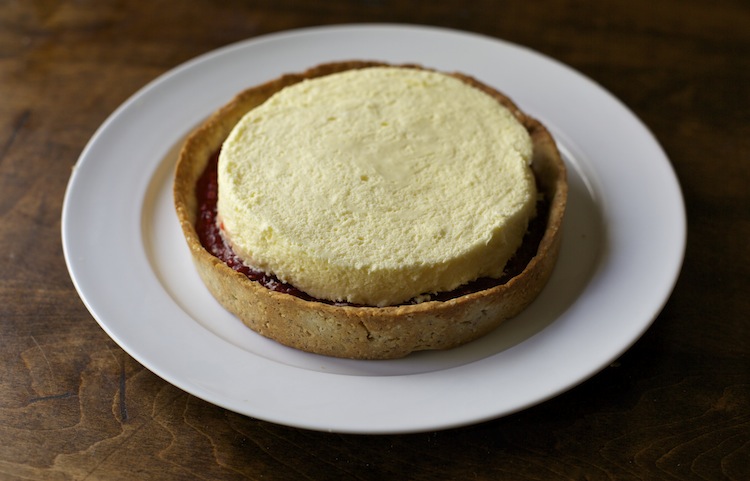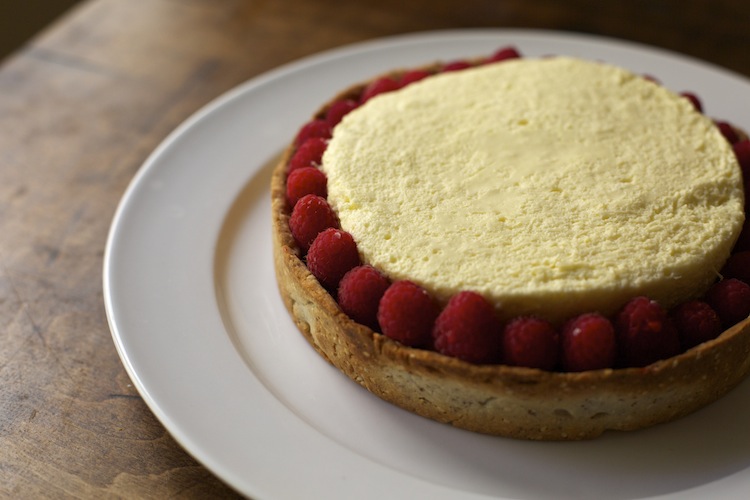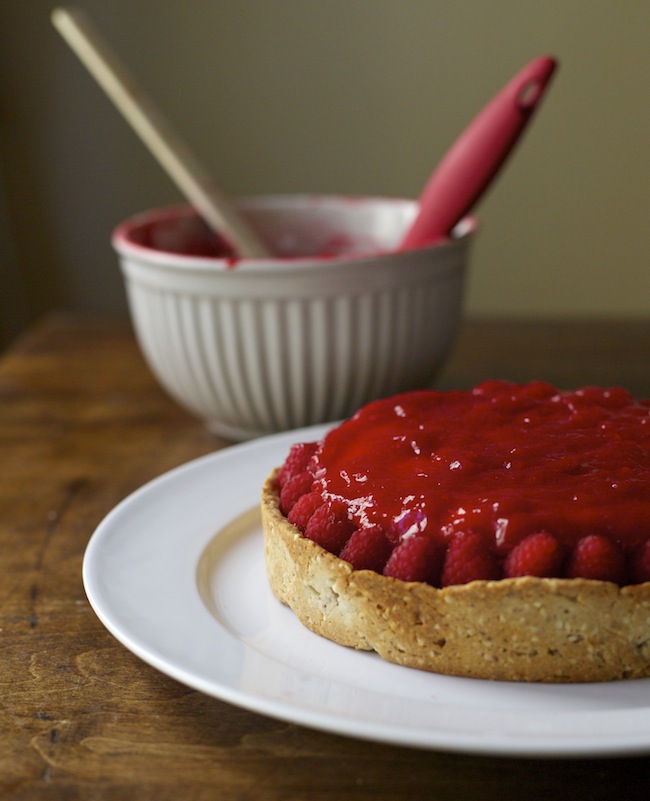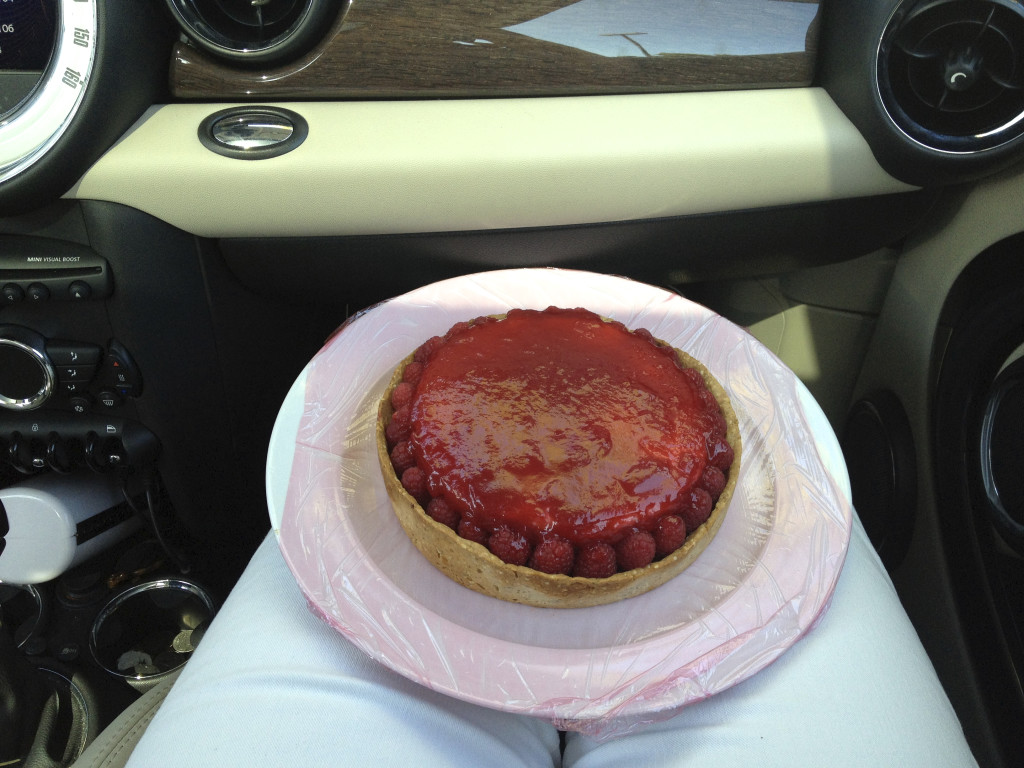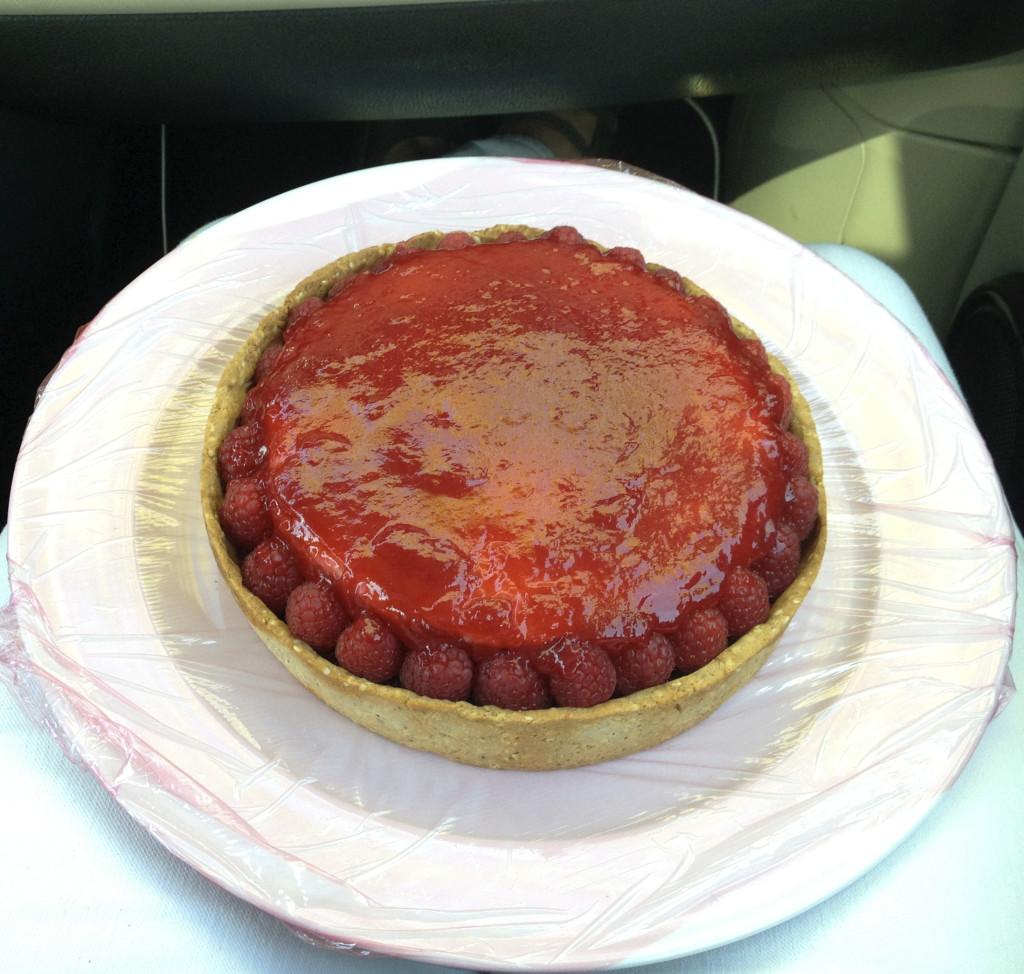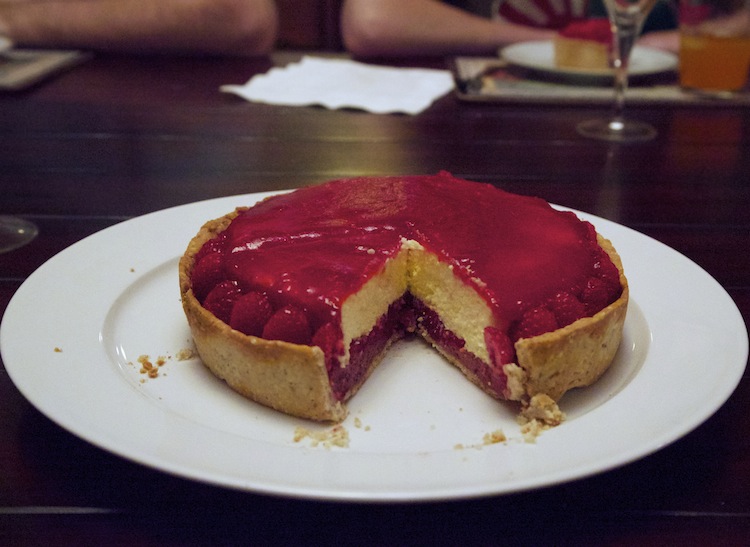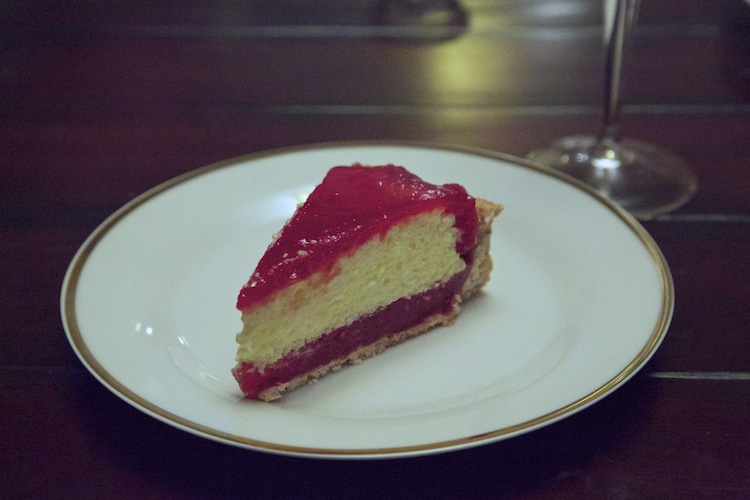Pierre Hermé’s Traveling “Tango”

I thought I’d take a break from posting photos of our trip to Paris to give those who would rather look at food a break. It’s only fair, I guess, after holding everyone captive with my vacation photos. But I will warn you this is still connected to Paris in a six degrees of separation sort of way. It’s about dessert, and it’s about French dessert in particular. French pastry from the French “Picasso of Pastry,” Pierre Hermé. I thought my sampling of beautiful pastry in Paris was lacking so ordered his book, Pastries as soon as we arrived home.
I thought it might make for a good project to get back into the complexities of pastry and although I have no desire to make all of the recipes, I did sit down with the book as soon as it arrived to read through it wondering where I should begin, making notes about ingredients I didn’t recognize or may not be able to locate — or locate in smaller than 25 lb. sacks.
Why do this? Because I have never been interested in “make it in five minutes” food and it seems to be quite the fad right now for some reason. My body certainly doesn’t need access to it, and if it did, I’d buy it at a local pastry shop. Besides, I find it interesting to roll my sleeves up with a complicated recipe whether it’s savory or sweet. It forces me to apply what I’ve learned by trial and error over the years, and to think about baking with the perspective of a professional. Once I saw the beautiful cases of the boulangeries and patisseries in Paris, I knew I had to learn more than I know about making pastry.
Some may say it’s ridiculous to attempt making desserts like this, but having enjoyed my share of an exquisite slice of perfectly prepared dessert when I’ve decided to treat myself, it is reason enough to make the attempt. One slice is enough, and it is to be savored. Knowing the time, technique, and exceptional ingredients that go into its preparation make it even more special.
After thinking about the equipment I currently own, and the ingredients available either at the market or in my pantry, I decided I’d tackle the cover dessert, “Tango,” which Pierre Hermé created with inspiration from the classic Linzer Torte.
Before I go any farther with this, I have to confess I was also making a salad from Thomas Keller’s French Laundry cookbook the same day — a salad which involved making chive oil, and tomato powder of all things. You can make a powder out of tomatoes? And one more thing — the food was going to have to travel for an hour in the car on a warm summer day.
Now you know I’m more than a bit loopy.
What is a “Tango,” exactly? It’s a layered dessert — a tart composed of a sweet shortcrust dough made with almond meal and sesame seeds, filled with a raspberry red bell pepper compote, covered with a sweet Parmesan custard, topped with a fresh raspberry jelly, and finished with a ring of fresh raspberries.
Ingredient Notes
For the Sesame Sweet Shortcrust Dough:
- I needed vanilla powder for this dessert, and because I had to order gelatin sheets for two different components of the recipe and thought I wouldn’t be able to find vanilla powder, decided to order that as well. I know substituting granulated gelatin is probably fine — I’ve done it before. But I wanted to work with ingredients listed as closely as possible. I ordered both from Amazon and then later happened onto the vanilla powder by accident in a local cooking supply store. It figures.
- I tried to locate the fleur de sel de Guerande recommended but had to settle for the Maldon sea salt I have in the pantry. I have no idea if that is sacrilege or not. English sea salt in French pastry. Sacre bleu!
- I had the sesame seeds, powdered sugar, butter, and almond meal in my pantry already.
For the Parmesan Custard:
- Parmesan custard. Really? I could not wait to see what this tasted like in a dessert. I opted for the suggested Parmigiano-Reggiano because I had no idea whether I would be able to find Vache Rouge. Yes, I should have called around, but I’m lazy like that more than I’d like to admit.
- Mineral water = bottled water to me. Check.
- Egg yolks & heavy cream. Check.
For the Raspberry and Red Bell Pepper Compote
- I had the raspberry vinegar in my pantry as well as the superfine sugar.
- The idea of “1/2 red bell pepper” gave me a moment of indulgent frustration. How big should the red bell pepper be, exactly? And then I moved along.
- The “1 cup of raspberry puree” is casually there alongside the other ingredients. You have to make it, of course. And you have to find where in the book the recipe is located. No, I wasn’t going to wing it with my own idea of raspberry puree.
For the Raspberry Puree
- Fresh raspberries (3 cups) and 1/3 c. superfine sugar.
For the “Finishing”
- You have to make raspberry jelly the night before and chill it.
- Fresh whole raspberries are placed in a ring around the finished Tango.
Equipment Notes
- Food processor for the dough
- Blender for the red pepper puree
- Fine mesh strainer for the red pepper puree and raspberry puree
- Food mill for the raspberry puree
- Wire whip or mixer for the custard
- Flan ring (I was going to buy one in Paris, but didn’t thinking I have tart pans. Well. I ended up using a cake pan with a removable bottom.)
- Silicone mat to set the custard on while chilling
- Tart pan for the pastry crust
- Dried beans for blind baking
- Special fringed parchment paper — I used regular parchment paper after I looked and couldn’t find it in a local cooking store.
- Hair dryer to release the custard from the pan
- A convection oven (I’ve never made a recipe which specified I use a convection oven, but all of the recipes in this book do)
Preparation for Pierre Hermé’s “Tango”
Make the pastry dough first because it always needs time to chill.
Then make the Parmesan custard. Please know that my digital scale ran out of batteries and I couldn’t get more, so trying to figure out how to measure the quantity of grated Parmigiano-Reggiano this recipe required was a bit of a time soaker, but I figured it out. This was my first experience using gelatin sheets. They’re pretty interesting. They soak for about 20 minutes in cool water then squeezed to remove the excess liquid and ready to incorporate into whatever they need to go in. Yes, I also improvised on the container for the custard. I inverted a cake pan and set it on a silicone mat as indicated to go into the fridge. I was more than a bit worried about whether it would seep out before it was set and it looked like it was going to, but didn’t.
This is the raspberry jelly preparation — just fresh raspberries, superfine sugar, and lemon juice. I decided to use the tamis to remove the seeds — it wasn’t in the directions. I don’t mind seeds in jam, but thought I didn’t want them in this dessert. I’m sure I would get an F for that move, but there you go. Just look at that beautiful, glossy raspberry jelly I achieved in the end. The flavor was incredible and I had leftovers so it went in the fridge to slather on toast with butter.
Alas, I did not remove the peelings on the red bell peppers as directed because I knew I would be running it all through a fine meshed strainer and they’d remain behind. Exhibit A above. Can you believe the incredible color? As far as quantity goes, I only needed 2 tablespoons for the recipe, so clearly I garnered enough with the medium pepper I decided to use half of.
Ah, the first problem. The red pepper puree was too cool, and of course, the softened gelatin would not dissolve, but I worked it out, setting the dish over a pan of simmering water and stirring it until all was dissolved. Then the raspberry puree went into the mix. If you’re wondering, yes, you can actually taste the red bell pepper even though it is such a small quantity. I gave my husband a sample and he could tell. The flavor of this mixture is remarkable.
Running fresh raspberries through a food mill here and it always takes much longer than I think it will. You have to use a sort of spin forward a couple of times, then backward and repeat until you get the job done. But it works — and much differently than if using a blender or food processor which will rupture the seeds.
Fresh raspberry puree, ready to go into the Raspberry and Red Bell Pepper Compote.
Since all the layer necessities are ready and waiting, the chilled dough is ready to be rolled out. Isn’t it gorgeous? The recipe doesn’t prepare very much dough, and it rolls out quite nicely. But as always, once placed in the pan, it has to be pressed and shaped and trimmed and evened out even though it’s been chilled. It’s a very soft dough. You can see I used plastic wrap to roll it out on — that’s what I usually do. I didn’t have quite the right size of pan with respect to height, so used another cake pan to bake the crust in.
The sesame sweet shortcrust dough is in the buttered pan, lined with parchment, and filled with my usual mix of pie weights and dried beans. I keep them in the cupboard in a bag so they’re read when I need them. I always like to place the pan on a baking sheet just to be on the safe side.
This is the Parmesan custard. A few blasts from a hairdryer quickly released it from the pan it was chilling in. Now. How to get it off this pan and onto the dessert during construction. I thought some freezer time would be necessary.
With the baked crust completely cooled, it is filled with the Raspberry and Red Pepper Compote. Yes, I know my crust looks a bit wonky. But it was quite the sturdy pastry crust. I was amazed at how well it handled. I was able to pick it up and move it around easily without worrying about it cracking.
Ah, getting that custard onto that compote. Goodness. You can see my smudge marks on the top. I think I used two large spatulas and there was some flipping involved. It was a bit stressful because I worried that it would break, but I’d placed it in the freezer for a bit to firm it up and make it easier to handle. It worked!
Here, I’m placing the raspberries around the Parmesan custard and thinking the whole time, I should put the raspberry jelly on first. But no. The directions did not indicate that I should do that. I was compliant to a fault which is rare. I thought about the varying size of raspberries as I did this, wondering if I would have to squeeze the last one in and plotting about whether the large ones should help disguise the undulating edge of my crust.
The idea of brushing the raspberry jelly over the Parmesan custard as the directions expect caused me some grief. I expected to need to pour and spread, but I brushed. And it sort of globbed over. And not in a pretty way. There was no glossy, sheer layer of raspberry wonderfulness to be had. I was annoyed.
After some time in the freezer, it was time to transport and so to be safe, I placed the Tango over a plate lined with plastic wrap to keep it from sliding as we drove. Believe it or not, I was able to pick the entire dessert up with my hands to do this.
Here’s a better shot of it on my lap and on its way to a dinner party with the AC blasting on it all the way there. Yes, it made it there in good condition!
Dinner prep took much longer than we thought (we were cooking from Keller’s French Laundry after all), and so here is Pierre Herme’s Tango sliced for dessert at around 10:30 that night. It exceeded all my expectations and I only wish I could have presented it better, but I’m just keeping it real.
Truly an excellent experience, and a remarkable dessert.
Recipe Notes
- Would I make this again? Absolutely. The crust is fabulous. It’s delicious, forgiving to work with, and very sturdy after its baked — almost cracker like. If I’d used a flan ring I would have had a much more perfect crust. Maybe. The raspberry red bell pepper compote is also wonderful. The prep for the bell pepper puree was on the high maintenance side of things to get the required 2 tablespoons, but it does make the flavor in the compote. The Parmesan custard is excellent as well and as much as I’ve used goat cheese or mascarpone in many a sweet recipe, I’d never used anything else until now.
- The best part of this dessert is that it isn’t cloyingly sweet.
- On the pastry dough — it’s a soft dough, so rolling it out to a thin point is unnecessary. Flatten it out, then use your finger tips or the back of a big spoon to manipulate it into the tart pan. It make take a bit longer, but rolling the dough out perfectly then trying to get it into the pan without tearing it is annoying.
- So what would I do differently? For starters, I would make this recipe without having to tackle others at the same time. Not rocket science, but I never seem to learn. I can multitask at a pretty intense level, so I’m usually able to pull off a three ring circus in my kitchen. I’d like not to. I had to wash several things just to be able to use them again immediately while making this dessert and still, the mess in the end was enough to fill both my sinks and then some.
- Also, I need to stop making recipes like this when there’s a dinner party, or birthday to prepare for. Or, better said, if I do choose to do that, then I should make an effort not to take photos thinking I’ll share the experience here. Because in the end, for all the work, I end up with a crappy final photo. Right?
- I would also make sure the raspberry jelly was a bit more warm before “brushing” it over the Parmesan custard. It couldn’t be too warm because it would melt the custard, but there has to be a magic point. The fresh raspberries would be added last.
- As far as purchasing ingredients goes, I did my calculations for the raspberries required for this dessert and instead of thinking 8 cups, bought 8 – 8 0z. packages of raspberries. Silly me. It was quite the expensive mistake, so good thing I use them in my smoothies.
- I have other cookbooks by accomplished chefs and was surprised that the recipes in this book are pretty straight forward in comparison. When he tells you to begin the night before, trust him! There was only one sneaky thing in this recipe which I did catch because I read the recipe three or four times before I began — the 1 cup of raspberry puree required for the raspberry and red bell pepper compote was not linked to a recipe on another page. I had to go to the index to see where I could find it in the book, and even then, it wasn’t obvious. I did find it eventually, but I shouldn’t have had to look with so many steps organized so well to begin with. It just confirms that a recipe like this needs to be thoroughly gone over before beginning.
- Why haven’t I included the recipe? The book is available for purchase — I purchased it. And because I did nothing to adapt the recipe, it’s copyrighted information I won’t share. Too much of that is happening on the web at this point, so…Could you make this dessert without knowing the specific quantities? I say definitely. Choose your own shortcrust pastry dough recipe, your own jammy base, a fluffy custard, then a glaze. Voilà!
- What will I tackle next? I have my eye on the lemon tart, but I think the “Croissant Ispahan” would also be interesting. It’s a traditional croissant filled with rose-scented almond paste and compote of raspberries and lychees. Sounds so exotic! And I’ve yet to make a croissant. I did purchase a little Charlotte pan when we were in Paris, though, so his Olive Oil and Berry Charlotte sounds fabulous as well. I may have to draw straws.
More of all things Pierre Hermé:
- “Sugar, Spice and All Things Nice: The Picasso of Pastries, Chef Pierre Hermé Combines Flavors With an Artistic Flair” from the Wall Street Journal. Favorite quote from the article: “Mr. Hermé doesn’t balk at his imitators; when asked how often he notices other pastry chefs copying him, he says, “every day.” And he isn’t at all shy to reveal his secrets.” Nice.
- “Pierre Hermé’s Carrément Chocolat” from Zen Can Cook
- “Pierre Hermé’s Vanilla Tart” from Kitchen Musings
- “[PARIS] Pierre Hermé Fetish St. Honore & More” from Sugared and Spiced
